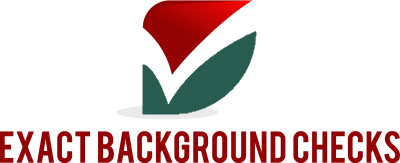Navigating Employment After a Positive Drug Test

Understanding Pre-Employment Drug Testing
Pre-employment drug test is a standard practice in many industries. Whether you’re applying for a job in a safety-sensitive field or a company that values a drug-free workplace, understanding the process and implications of drug testing is crucial. This part of the article will cover what pre-employment drug tests are, the types of substances commonly tested for, the different testing methods, and the role of drug testing in the hiring process.
What is a Pre-Employment Drug Test?
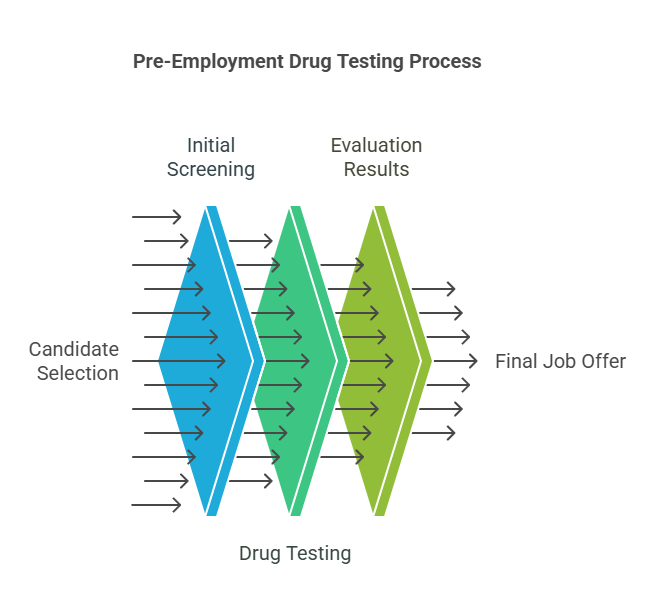
A pre-employment drug test is a screening procedure conducted by employers to determine whether a potential employee is using illegal drugs or has substances in their system that could impair their ability to work effectively or safely. These tests are typically required after a candidate has passed the initial stages of the hiring process but before a final job offer is made.
Drug tests are commonly conducted in various industries such as healthcare, transportation, construction, and manufacturing, but can also be used by employers in other sectors to ensure a drug-free workplace. The goal is to identify employees who may be using substances that could pose a risk to their health, their colleagues, or their overall job performance.
Why Do Employers Require Pre-Employment Drug Testing?
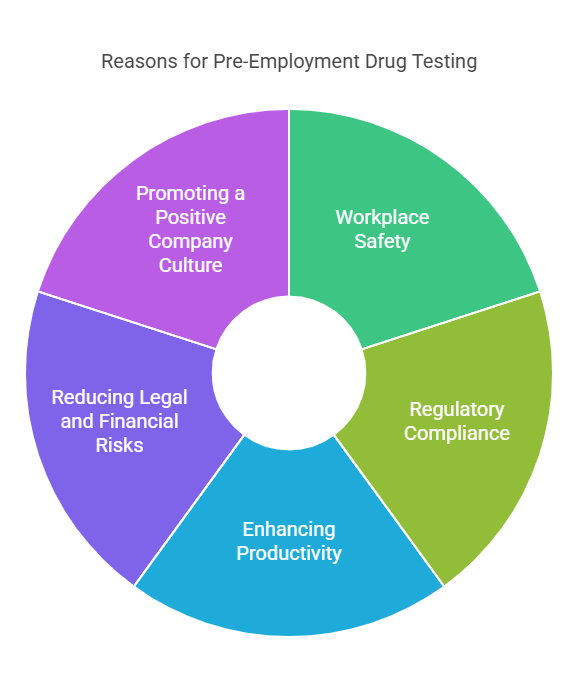
Employers have several reasons for conducting pre-employment drug tests. These reasons include safety concerns, regulatory compliance, and overall employee performance:
- Workplace Safety: In certain industries (such as construction, healthcare, and transportation), drug use can significantly impair an employee’s ability to work safely. If an employee is under the influence of drugs, their decision-making, motor skills, and cognitive function can be compromised, increasing the risk of accidents, injuries, and fatalities. By conducting drug tests, employers aim to create a safer environment for all employees.
- Compliance with Regulations: Some industries are subject to federal or state regulations that mandate drug testing for safety-sensitive roles. For instance, the Department of Transportation (DOT) requires drug and alcohol testing for drivers, pilots, and other transportation workers. Healthcare facilities may also require drug testing for employees who operate heavy machinery or handle prescription medication.
- Enhancing Productivity: Employees who are under the influence of drugs may experience reduced focus, poor decision-making, and impaired performance, which can hurt overall productivity. By ensuring that their employees are not using drugs, employers can enhance workforce efficiency and maintain high standards of performance.
- Reducing Legal and Financial Risks: Employers can reduce the risk of legal liabilities related to workplace accidents by screening for drugs and alcohol. A drug-free workplace policy helps protect the company from potential lawsuits resulting from accidents or injuries caused by impaired employees.
- Promoting a Positive Company Culture: Employers may also require drug testing as a way to promote a healthy and responsible workplace culture. Companies that invest in drug testing policies often signal to their employees that they prioritize workplace integrity and employee wellbeing.
Common Drugs Tested For
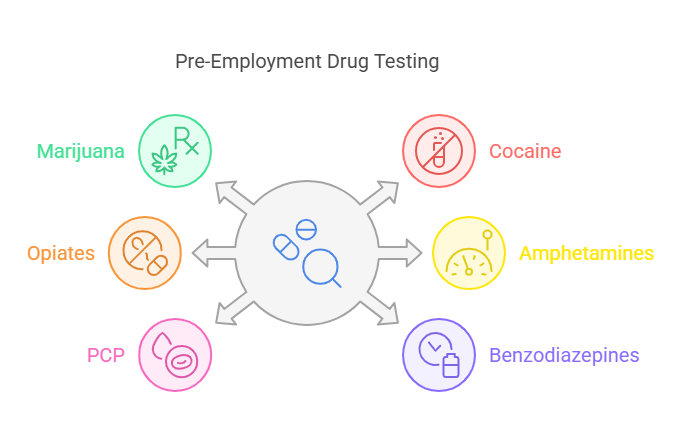
Pre-employment drug tests usually target specific types of drugs that are commonly abused. The substances tested for depend on the employer’s policy and the nature of the job. The following are some of the most common drugs tested for during pre-employment screenings:
1. Marijuana (THC)
Marijuana is one of the most frequently tested substances in pre-employment drug tests. Despite its legalization for recreational and medicinal use in several states, many employers still include it in their testing panels. Marijuana’s active ingredient, tetrahydrocannabinol (THC), can stay in the body for an extended period, depending on the frequency and intensity of use. THC can be detected in urine for up to 30 days, and it’s often flagged in tests as it can impair cognitive function and motor skills.
2. Cocaine
Cocaine is a powerful stimulant, and its use can result in serious health risks, including heart attacks, strokes, and paranoia. Cocaine is usually detectable in the urine for up to three days after use. Employers test for cocaine to prevent issues related to increased aggression, impaired judgment, and unsafe work practices.
3. Opiates (Heroin, Morphine, Codeine)
Opiates are a class of drugs that include heroin, morphine, and codeine. These substances are typically tested because they are highly addictive and can impair a person’s ability to function in a professional setting. They also carry significant health risks. Opioid use is a critical concern in many industries, especially in healthcare, where employees may have access to prescription medications that contain opiates. Opiates can be detected in the urine for 2–4 days after use.
4. Amphetamines (Including Methamphetamines)
Amphetamines are stimulants that can enhance alertness, but they can also be highly addictive and impair focus and motor skills. Methamphetamines, a type of amphetamine, are commonly abused due to their euphoric effects. Amphetamines typically stay in the body for 1–3 days. Employees working in industries requiring high attention to detail, like transportation or logistics, are often tested for amphetamines to avoid errors resulting from impaired judgment or concentration.
5. Phencyclidine (PCP)
Phencyclidine, also known as PCP, is a hallucinogenic drug that can alter an individual’s perception, leading to hallucinations, delusions, and violence. PCP is highly dangerous and can affect a person’s cognitive and motor skills for an extended period of time. Detection of PCP can be critical in ensuring the safety of employees. The drug can be detected in the urine for 3–7 days.
6. Benzodiazepines
Benzodiazepines are sedatives used to treat anxiety, insomnia, and other disorders. While prescription use is legal, these drugs can impair coordination, reaction times, and judgment. Common drugs in this category include Valium and Xanax. Although they are legal when prescribed, the side effects of benzodiazepines can interfere with workplace performance, especially in roles that require alertness. These drugs can be detected for several days or even weeks, depending on the specific substance used.
Types of Drug Tests
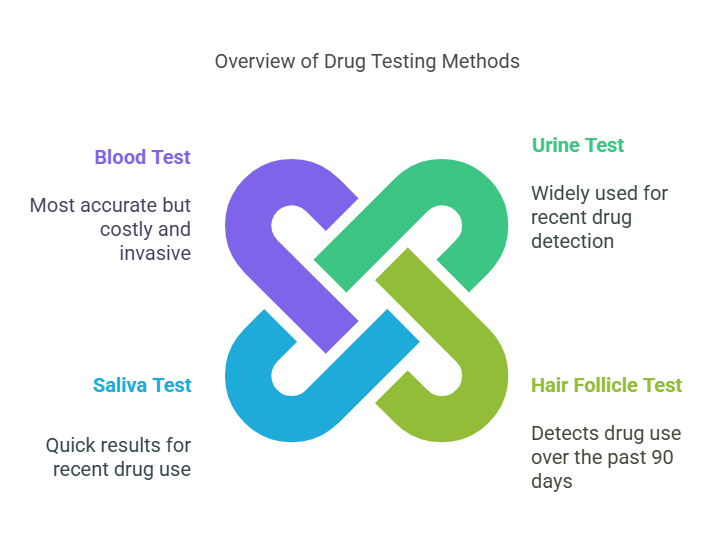
Employers use different types of drug tests in pre-employment screenings, depending on cost, accuracy, and the level of detail required. The most common types of drug tests include:
1. Urine Test
The urine test is the most widely used method for drug testing due to its affordability and ease of administration. Urine tests are effective for detecting recent drug use, including marijuana, cocaine, opiates, amphetamines, and other substances. This test has a detection window of a few days to several weeks, depending on the substance used and the individual’s metabolism. For example, marijuana can remain in urine for up to 30 days in frequent users, while cocaine is typically detectable for only 2–3 days.
2. Hair Follicle Test
Hair follicle testing is less common but is growing in popularity due to its longer detection window. This test analyzes a small sample of hair and can detect drug use over the past 90 days. Hair follicle tests are ideal for detecting substances like cocaine, marijuana, and opiates, but they are less effective for identifying recent drug use. Hair tests are typically used when employers need to know a candidate’s long-term drug usage history.
3. Saliva Test
Saliva tests are quick and non-invasive, providing immediate results. Saliva testing is usually used to detect recent drug use, typically within 24–48 hours of consumption. This test is ideal for employers who need rapid results but may not be as reliable for detecting longer-term drug use.
4. Blood Test
Blood tests are the most accurate method for detecting drugs in the system but are also the most invasive and costly. Blood testing is typically used when confirmation of drug use is necessary, or when an employer suspects that other tests have provided false or inconclusive results. This method is ideal for detecting drugs like alcohol or stimulants (e.g., cocaine, methamphetamines), but it’s not commonly used for routine pre-employment drug screenings due to its expense.
The Testing Process
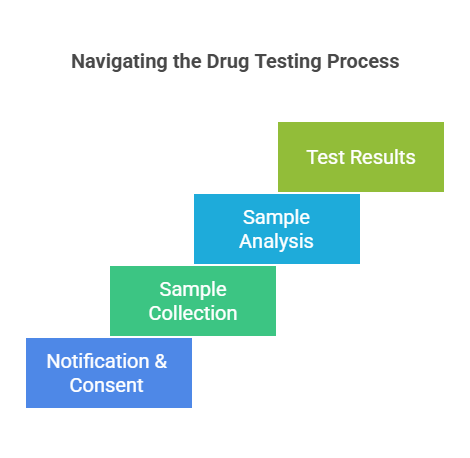
When you are required to take a pre-employment drug test, the process will generally follow these steps:
- Notification and Consent: The employer will notify you that a drug test is a condition of employment and will request your consent to perform the test. Employers are typically required to inform candidates about the testing policy in advance.
- Sample Collection: Depending on the test type, you will be asked to provide a sample. For urine tests, you may be asked to go to a designated collection site. For hair follicle or saliva tests, the sample will be collected on-site.
- Analysis of Sample: Once the sample is collected, it will be sent to a certified laboratory for analysis. In the case of a urine test, the sample will be tested for the presence of drugs and their metabolites.
- Test Results: Test results are typically returned to the employer within a few days. If the test is negative, the hiring process will continue. If it’s positive, the employer may take further action, such as withdrawing the job offer or requesting additional clarification.
Consequences of Testing Positive on a Pre-Employment Drug Test
Testing positive on a pre-employment drug test can be a stressful and disappointing experience. It can directly impact a candidate’s job prospects, and often, individuals are unsure of how to handle the situation. Understanding the potential consequences and how employers typically respond to a positive result can help individuals make informed decisions and plan their next steps.
In this part, we will explore what happens immediately after an individual tests positive for drugs in a pre-employment drug test, the employer’s options in response to the test result, how candidates can explain positive results, and the long-term impact on future employment opportunities. We will also look at specific examples of potential outcomes depending on the company’s policy and industry.
Immediate Consequences of Testing Positive
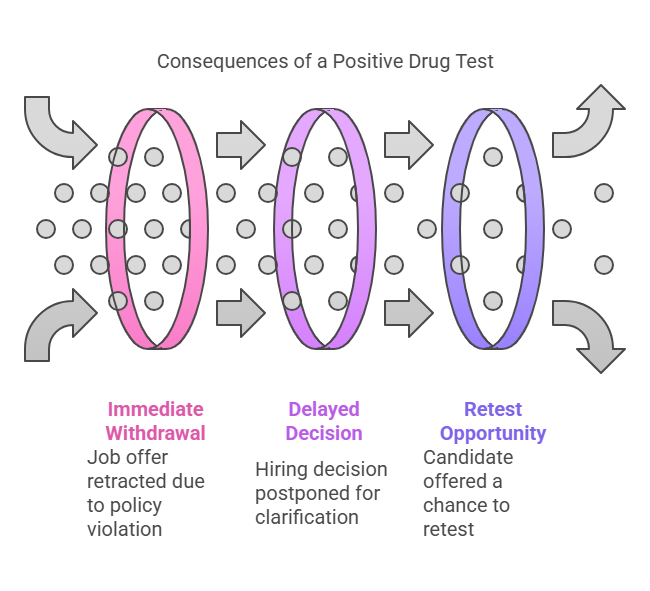
The immediate consequence of a positive drug test result is typically the withdrawal of the job offer. Employers who conduct drug tests do so as a part of their hiring process, and a positive result signals that a candidate has violated the company’s drug-free workplace policy. This is especially true if the drug test includes substances like marijuana, cocaine, or amphetamines, which are not legal in many jurisdictions or are considered major concerns for workplace safety.
While the immediate response is often a rejection of the applicant or rescinding of a job offer, some employers may take other steps based on their internal policies. The impact can vary depending on the nature of the job, the industry, and the employer’s specific stance on drug use. Let’s break down the possibilities:
- Immediate Withdrawal of the Job Offer: If a candidate fails the pre-employment drug test, the most likely outcome is the immediate retraction of the job offer. This is especially common in industries where safety is a primary concern, such as transportation, construction, or healthcare. A positive drug test result, for example, may indicate that the candidate is unfit to operate heavy machinery, drive a vehicle, or carry out tasks that require heightened concentration and coordination.
- Temporary Delay in Hiring Decision: In some cases, the employer may decide to delay their hiring decision. This could happen if the employer suspects that the positive result might have been due to a legitimate medical condition or prescription medication. A temporary delay gives the candidate time to explain the results or request further clarification through a retesting process.
- Opportunity for a Retest: Depending on the employer’s policies and the type of drugs detected, some employers may offer candidates the chance to retake the drug test. If a candidate believes that the result was inaccurate or if the substance detected was due to prescription medication, a retest might provide an opportunity to clear up any confusion.
Employer’s Next Steps After a Positive Test Result
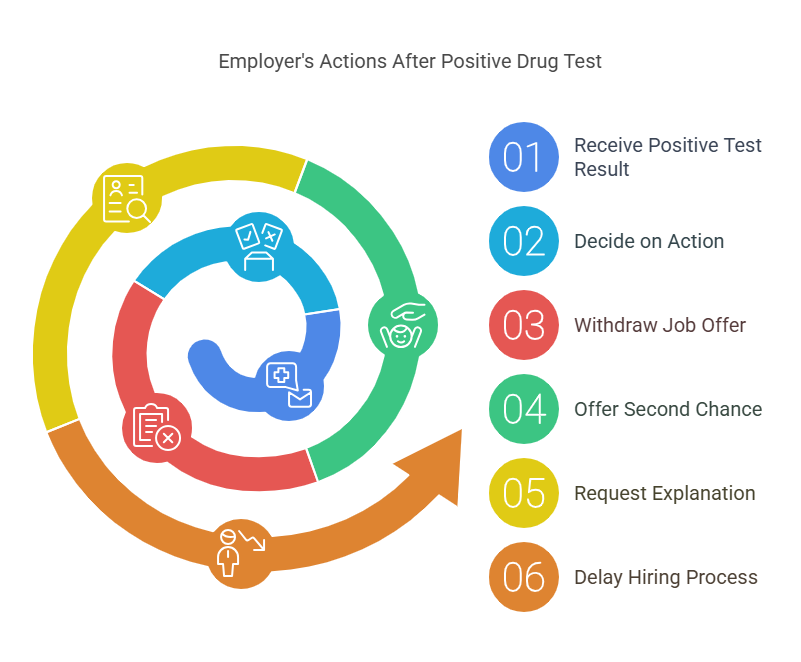
Once the employer receives a positive drug test result, they must decide how to handle the situation. The employer’s next steps depend on several factors, including the company’s drug testing policy, industry regulations, and the specific substances detected. Below are the possible actions an employer can take after receiving a positive result:
1. Withdrawal of the Job Offer
In most cases, when a candidate tests positive for drugs, employers will choose to rescind the job offer. This is particularly likely if the role requires physical labor, operating machinery, or working in high-risk environments, such as driving or medical care. Employers want to ensure that the candidate will be able to perform their duties without being impaired by drugs or alcohol. For example, a truck driver testing positive for amphetamines may lose the job offer, as such substances can cause impaired driving and pose a safety risk to both the driver and the public.
2. Opportunity for a Second Chance
Some employers may choose to give a candidate a second chance after a positive drug test. This is especially true in industries that focus on rehabilitation, customer care, or those that have programs dedicated to helping employees who struggle with substance abuse. In these cases, the employer might offer counseling, rehabilitation programs, or a second drug test to determine whether the candidate is fit for the role.
3. Request for an Explanation
In some instances, especially if the candidate believes that the positive test result was due to prescription medication or an accidental ingestion, employers may give the candidate an opportunity to explain the situation. If a prescription drug caused the positive test result, candidates may need to provide a doctor’s note or prescription records to validate their claims. In these cases, the employer may ask the candidate to submit further documentation, such as a doctor’s note or medical records, before making a final decision.
4. Delaying the Hiring Process
Another possibility is that the employer may delay the hiring process until further investigation is done. If the employer is unsure whether the drug use was due to a legitimate reason (e.g., prescribed medication or a non-prescribed over-the-counter substance), they may choose to give the candidate time to explain or undergo further screening. The hiring process may be temporarily put on hold as the employer considers the next steps.
5. Retesting the Candidate
Some employers may allow candidates to take a second test if they believe that the original test result was inaccurate. Retesting might occur if the candidate has a valid explanation for the positive result (e.g., prescription medication) or if there was a mistake in the initial testing process. Retests provide a chance for the candidate to prove that the positive result was a mistake or that they are no longer using the drug in question.
How to Explain a Positive Drug Test Result
A positive drug test result doesn’t always mean a candidate is out of the running for the job. There are several ways a candidate can explain their positive drug test result, and how they approach the conversation can make a difference in whether they can salvage the job opportunity.
1. Be Honest and Transparent
Honesty is the best policy when explaining a positive drug test result. If the result was due to the use of prescription medication, the candidate should provide documentation from their healthcare provider or prescription records. Being upfront and transparent about the situation shows the employer that the candidate is responsible and willing to work with them to resolve any concerns.
2. Offer a Medical Explanation
If the positive result is due to a legitimate medical condition or prescribed medication, candidates should be prepared to provide medical documentation. This might include a doctor’s note, a copy of the prescription, or any other relevant information that explains why the candidate tested positive. Employers may be more willing to overlook the positive result if the candidate can prove that the drug use was legal and medically necessary.
3. Explain Accidental Drug Use
In some cases, candidates might have ingested a substance unintentionally (e.g., consuming food or drink contaminated with a drug). If the drug test result is due to accidental use, the candidate should be prepared to explain the circumstances. For example, if a candidate accidentally consumed a marijuana-laced product, they could explain how it happened and provide any evidence supporting their claim.
4. Demonstrate Remorse and Responsibility
Even if the drug use was intentional, candidates who are open and express remorse may increase their chances of maintaining the job offer. Showing that they are aware of the consequences of their actions and are willing to take responsibility may encourage the employer to give them a second chance. In some cases, candidates may be asked to undergo a rehabilitation program or provide a clean drug test within a certain time frame.
Impact on Future Employment Opportunities
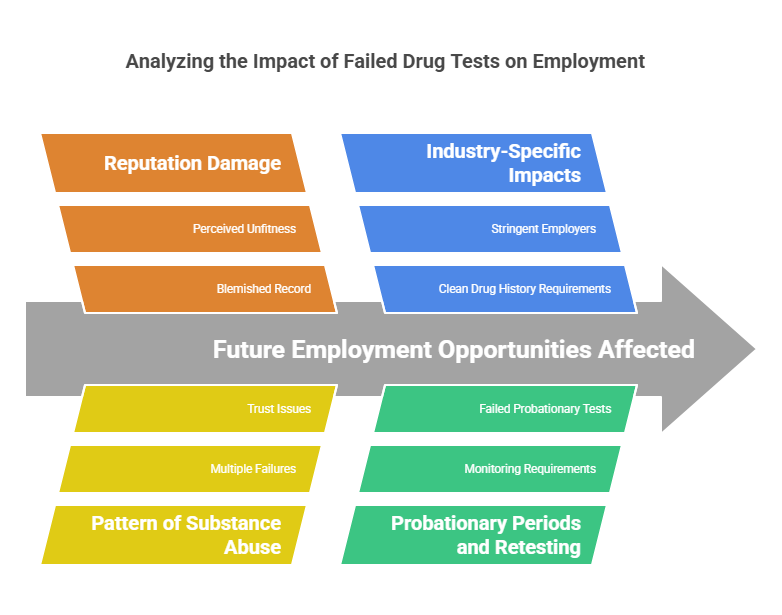
Testing positive on a pre-employment drug test can significantly affect a candidate’s future job prospects. Once an offer has been rescinded due to a failed drug test, candidates may find it difficult to secure employment in the future. Here’s why:
- Reputation Damage: A failed drug test can leave a candidate with a blemished record, especially if they fail to handle the situation appropriately. Employers may perceive the candidate as unfit for employment, particularly in industries where safety is a concern.
- Multiple Failed Tests: If a candidate tests positive on multiple occasions, it could signal a pattern of substance abuse, which is a red flag for employers. If you fail one test, it may be possible to recover from the situation. However, repeated failures can make it difficult to regain the trust of potential employers.
- Industry-Specific Impacts: In certain industries, such as healthcare, law enforcement, or transportation, employers are particularly stringent about drug use. A positive drug test in these fields can be especially damaging to future job prospects, as companies in these industries often require candidates to have a clean drug history.
- Probationary Periods and Retesting: In some cases, employers may give a candidate a probationary period where they are monitored for drug use. During this time, the candidate may be required to pass multiple drug tests. Candidates who fail a probationary test may have difficulty finding work in the same field.
Possible Outcomes of Testing Positive on a Pre-Employment Drug Test
| Scenario | Potential Outcome | Employer’s Action | Candidate’s Response |
|---|---|---|---|
| Positive test for marijuana | Job offer rescinded | No further consideration | Explain prescription use or accidental ingestion |
| Positive test for amphetamines | Job offer rescinded | Immediate withdrawal of offer | Offer medical explanation or appeal |
| Positive test for cocaine | Job offer rescinded | Immediate withdrawal of offer | Show willingness for rehabilitation |
| Positive test for prescription meds | Job offer delayed | Provide medical documentation | Submit doctor’s note, prescription history |
| Positive test for alcohol | Job offer delayed | Retesting after a probationary period | Show commitment to sobriety and rehabilitation |
